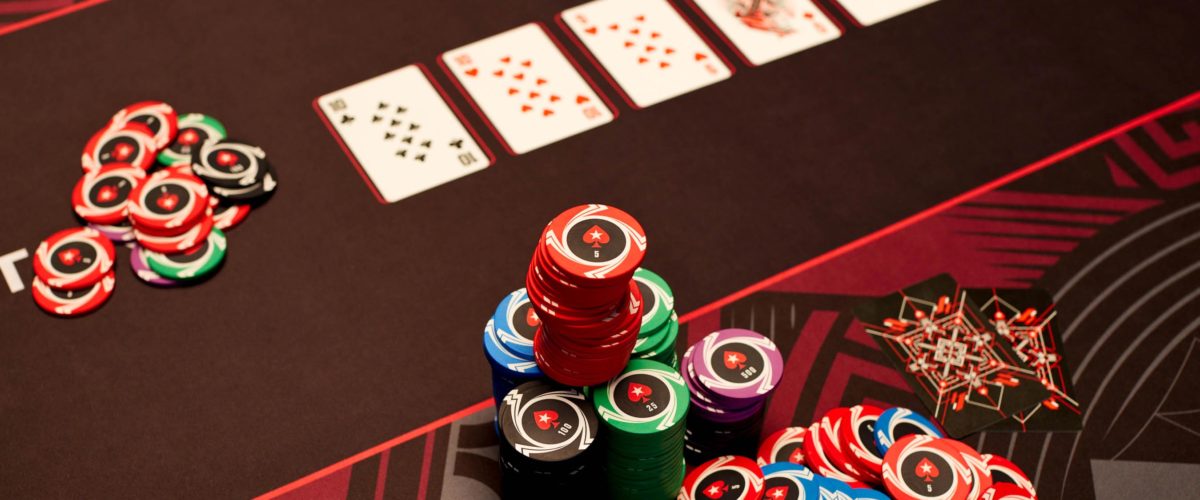The Early Phase
Every poker player has his or her own specific strategy for approaching the wide variety of situations thrown up by the game. Dynamics change depending on the buy in, what variant is being played, the stage of a tournament or cash game and the personnel around the table. A good player will adapt to suit the variables.
However in single table tournaments (STTs), particularly during the early stages, many of the changeable factors are removed. Everyone starts with the same stack, the blinds are low, and typically you will not have much information about your new opponents. Therefore it is possible to come up with some general guidelines for play at the start of STTs.
(Remember, these guidelines refer to nine-handed single table tournaments, with a regular speed of blind increase.)
Play super-tight early on
Your strategy in the first three blind levels is simple: stay tight. Most of your opponents in low stakes STTs will play far too loose and see too many flops with weak hands. They will then compound their errors by making weak calls post flop.
To take advantage of these weaknesses, you should play very few hands during the first three levels of play. The blinds are too small to be worth going after, and you don’t want to risk your tournament without a strong hand. Let everyone else knock each other out – it doesn’t matter if you fall behind in chips at this stage.
Don’t bluff
They call too often… they call too often… Just keep repeating that to yourself. When your opponents are playing too loose, you will get paid off when you bet your big hands. But it makes bluffing a losing proposition. Just don’t do it.
Don’t slow play
During these early stages, it does not pay either to check-raise or to slow play. If you have A♦ A♥ and the flop comes A♣ Q♥ 8♠ , don’t check-raise or just call any bet. Bet or raise and then laugh when your adversary calls with Q♦ J♦ . The only possible exceptions are those rare instances when you flop quads or a straight flush. Should this occur, you can slow play and check the flop, but make sure that you try to get all your chips in on either the turn or the river.


Beware of check-raises
In low and micro stakes STTs a check-raise almost always means a strong hand, usually two pair or better. Always fold to a check-raise unless you have at least two pair yourself. Even if you have A♠ K♠ and the flop is K♦ J♥ 4♣ , you should fold if an opponent check-raises. Stronger opponents may check raise bluff with a hand such as Q♦ 10♦ , but rarely in low-level tournaments. Just fold.
Pay attention
How are your opponents playing? Do they like to limp into a lot of pots? Do they always come in with a raise? After the flop do they call with weak draws? Do they make big bluffs? When they flop a set or trips, how do they play it? Do they bet, check-raise, or just check and call? Take notes on how other people play. It will be time well spent.
Basic pre-flop play
The following table shows how to play the full range of starting hands pre-flop. See the STT Overview article for description of the hand categories.
| Hand Category | No Raise Buttor or Cut-off |
No Raise Any Other Position |
Raise Any Position |
|---|---|---|---|
| Category 1 | Raise | Raise | Re-Raise |
| Category 2 | Raise | Raise | Re-Raise |
| Category 3 | Raise | Fold | Fold |
| Category 4 | Raise | Fold | Fold |
| Category 5 or worse | Fold | Fold | Fold |
In the early stages of a STT, you do not want to be involved in any pots with anything less than a Category 4 hand. Fold anything lower regardless of prior action.
Category 1 and Category 2 hands are super-strong, however, and you should be looking to build a big pot. Raise or re-raise these hands from any position.
As the table shows, you should only really play Category 3 or Category 4 hands if you are in late position and will be opening the action. If any other player has entered the pot voluntarily, then you should fold.
Raising pre-flop:
- If your hand demands a raise pre-flop, follow the following guidelines:
- Raise four big blinds if you are first to enter the pot
- If others have limped, add one big blind to your raise for each limper
- If a raise is 1/3 of your chips or more, push all-in instead
- If someone has raised before you, make a re-raise of four times their bet
Advanced strategies pre-flop
Once you have gained some experience using our basic pre-flop recommendations and are comfortable with the hand categories, you can add some advanced strategy to your pre-flop play. This is maybe the most difficult chapter in the whole series of articles, so work through the following material carefully.
Calling with pairs to see a flop
Although the chart above advocates a raise or fold strategy, there will be some spots in which you can opt to call pre-flop. If no one has entered the pot before you, play as before: raise with Category 1 and 2, plus 3 and 4 in late position. But you can sometimes call with small pocket pairs.
The rule of two through ten
Here’s a rule for beginners that provides guidelines on how much of your stack you should risk either raising, or calling a raise, with a pocket pair. When you are dealt pocket twos, through to pocket tens, you should call or raise up to the same percentage of your stack as the size of your pair. So:
2% for 22
3% for 33
4% for 44
5% for 55
6% for 66
7% for 77
8% for 88
9% for 99
10% for TT
This gives you precise advice for situations that arise in every game. Bigger pairs, starting with JJ, are different from their smaller cousins. With small pairs you will usually need to improve to win. Big pairs can often win without improvement, so if you have been raised, you should re-raise or even move all-in.
Considerations include your position, your stack size, your opponent’s stack size, whether the initial raiser is passive or aggressive, and other bits of information you may have gleaned.
When using the “Rule of Two Through Ten”, always open with a standard raise of four times the big blind if you have sufficient chips. Otherwise just call the big blind (limp in). For example, with blinds of 15/30 and a stack of 1,400, raise to 120 with 10♥ 10♣ , but just call for 30 with 4♥ 4♣ and fold 2♥ 2♣ .
Playing your pair post-flop
If you limped in with your pocket pair, check and fold after the flop unless you flop a set or an over-pair. An over-pair is better than flopping top pair, but it is still vulnerable. Play it as you would top pair with the top kicker. Don’t re-raise with an overpair. If you bet and are raised, just call and re-evaluate your situation on the turn.
If you have been paying attention to how people play, then you should be able to answer a few questions. Do you think he has you beat? What kind of pot odds are you getting? Are you in or out of position? These questions will all affect how you continue to play the hand.
Flopping a set
A set is a very strong hand and can be very deceptive, especially when someone else has raised pre-flop. The best situation for flopping a set is when you call someone’s pre-flop raise with something like and the flop comes , or similar. You have flopped a set and your opponent is very likely to have flopped top pair. You may be able to pick up his whole stack on this hand.
With a set, you want to get all the money in if possible. If you were the last player to raise pre-flop or if no one raised, you should always bet your set on the flop. Don’t slow play.
If someone else raised and you called, there are a number of ways to get the money in. Out of position, the best way to do this is betting flops that contain an ace or a king and hope to get raised. If the flop is all low cards, it is probably best to check-raise. Checking and just calling is another option, but you risk being out drawn. If you are in position, you should bet if your opponent checks and raise if he bets.
In all cases don’t slow play after the flop; always put in a bet on the turn and usually on the river too. If the river is extremely scary with lots of straights and/or flushes possible (A♥ K♥ Q♠ 10♣ 5♦ for example), don’t bother betting your set. If your opponent bets on that board, you will have to decide if you want to call.
Consider the pot odds as well as your opponent’s previous actions. How likely is he to have made his hand?


Basic post-flop play
Here is some simple advice for different scenarios and hand strength categories during the early stages of a low stakes STT:
Multi-way pots (two or more opponents)*
- Only make pot-sized bets and raises, no more, no less
- Only play strong made hands for your whole stack (the hand categories are defined in the first part of this series)
- In general, look at the size of the pot on the flop. The bigger the pot, the more you should fight for it as the risk to reward ratio improves
- Play your strong made hands fast to protect them and get value with pot-sized bets and raises. With more opponents the chance increases that someone you’re dominating on the flop will catch up on later streets
- With medium made hands you can play for one bet on one street, at most two, but be aware that with more opponents the chance that a better hand is lurking somewhere is much higher
- Usually check/fold all other made hands unless you improve
- Be passive with your draws
- You can check and call a bet for a good price with medium drawing hands and strong drawing hands but don’t call huge bets for a big chunk of your stack with only a draw
- Check/fold weak drawing hands unless you face something like a 20 chip bet into a 300 chip pot where you can call and take the chance to improve
- If the flop gets checked around and you improve to a strong made hand on later streets, you can usually play for your stack unless the board gets extremely scary with four flush or four straight cards
- If your bet or raise is 1/3 of your remaining stack or more, push all-in instead
- Any time you bet or call 1/3 of your chips or more, you should consider yourself pot committed. This means that you’ve invested too much of your stack to fold, and you’ll end up putting the rest of your chips in on the turn or river
Heads up pots (only one opponent)
In general play heads up pots as you would multi-way pots, as detailed above but additionally:
- Play your strong drawing hands aggressively with a bet and raise on the flop, as you have a very good chance to improve
- A medium made hand is strong enough heads-up to play for two bets, either on the flop and turn or flop and river
Advanced post-flop play: The continuation bet
When you make a pre-flop raise, but the flop misses your hand, you might be tempted to give up and get away cheaply. But this is actually a good spot to run a specific kind of bluff and to bet. This is called a “continuation bet” or “c-bet”.
The bet on the flop is a continuation of the strength you represented before the flop. A raiser is more likely to have a stronger hand than a caller, so if both hands miss the flop, which happens fairly often, many times the pre-flop raiser can pick up the pot with a bet.
If you have raised pre-flop with A♦ J♦ and the flop comes K♠ 7♦ 6♣ , you can still bet. You raised pre-flop so your opponents could suspect you have A♦ K♥ or similar and fold. If the flop is 7♥ 5♣ 2♠ , they might still fold to your bet, thinking that you might have a big overpair or at least bigger overcards.
You can also make continuation bets if you raise with a pocket pair and there are one or more overcards. If you raise with 9♣ 9♠ , you can put in a continuation bet when the flop comes A♦ Q♣ 4♥ .
This is the only situation bluffing makes sense in the early stages of a STT.
If you miss the flop and your continuation bet is raised, just fold. If it is called, check and fold on the turn, unless your hand improves. If you were about to c-bet, but someone bets before you, fold.
In general:
If you get one pre-flop caller: C-bet all the time.
If you get two pre-flop callers: When last to act, c-bet all the time the first two players check.
First or second to act, c-bet if the flop contains an ace, king, pair or trips.
If you are last to act and have a weak draw, medium draw or strong draw, don’t c-bet, try to improve on later streets and follow the advice in Basic Post-Flop Play.
If you get three or more pre-flop callers: Don’t c-bet.
Make sure that you make a pot-sized c-bet as you would with your strong made hands so you don’t give away any information about your hand strength.
With ace-queen:
You raise with A♣ Q♣ and get two callers behind you.
C-bet on the following flops:
- K♥ 7♦ 5♠
- 9♦ 9♠ 4♥
- 10♠ 10♦ 10♣
Don’t C-bet these flops:
- J♦ 6♦ 4♠
- 7♥ 5♠ 4♦
- 4♣ 3♣ 2♥
Single table tournament re-cap
- Play super-tight pre-flop
- Don’t bluff
- Don’t slow play
- Beware check-raises
- Pay attention
- Raise and re-raise pre-flop with Category 2 hands from any position
- Raise with Category 3-4 from the cut-off and the button
- When comfortable use the “RULE OF TWO THROUGH TEN” in your pre-flop play
- Follow the advice for post-flop play according to your hand strength category, the size of the pot and the number of opponents
- If your bets and raises are more than 1/3 of your remaining stack push all-in
- When comfortable add the continuation bet to your post-flop play


